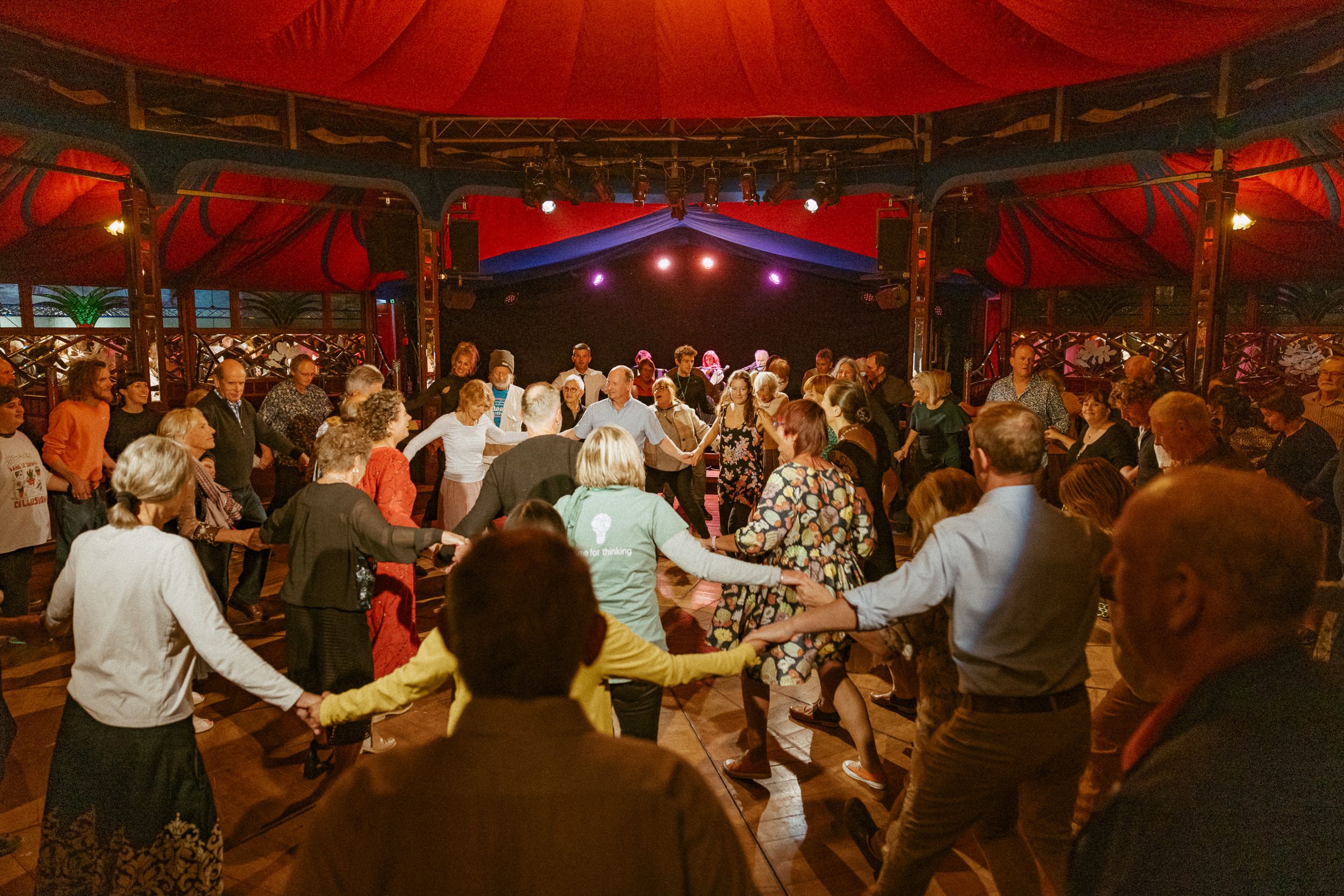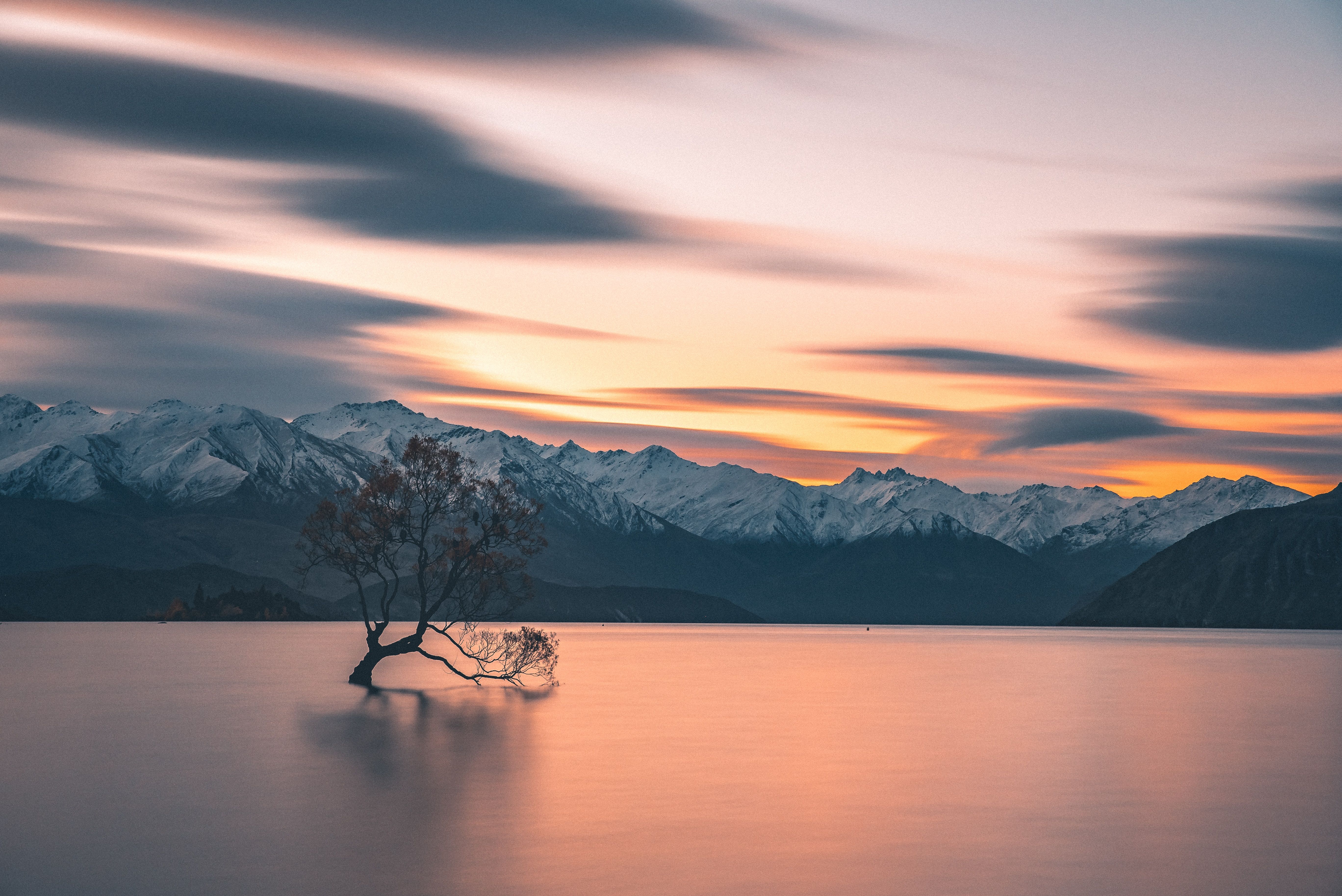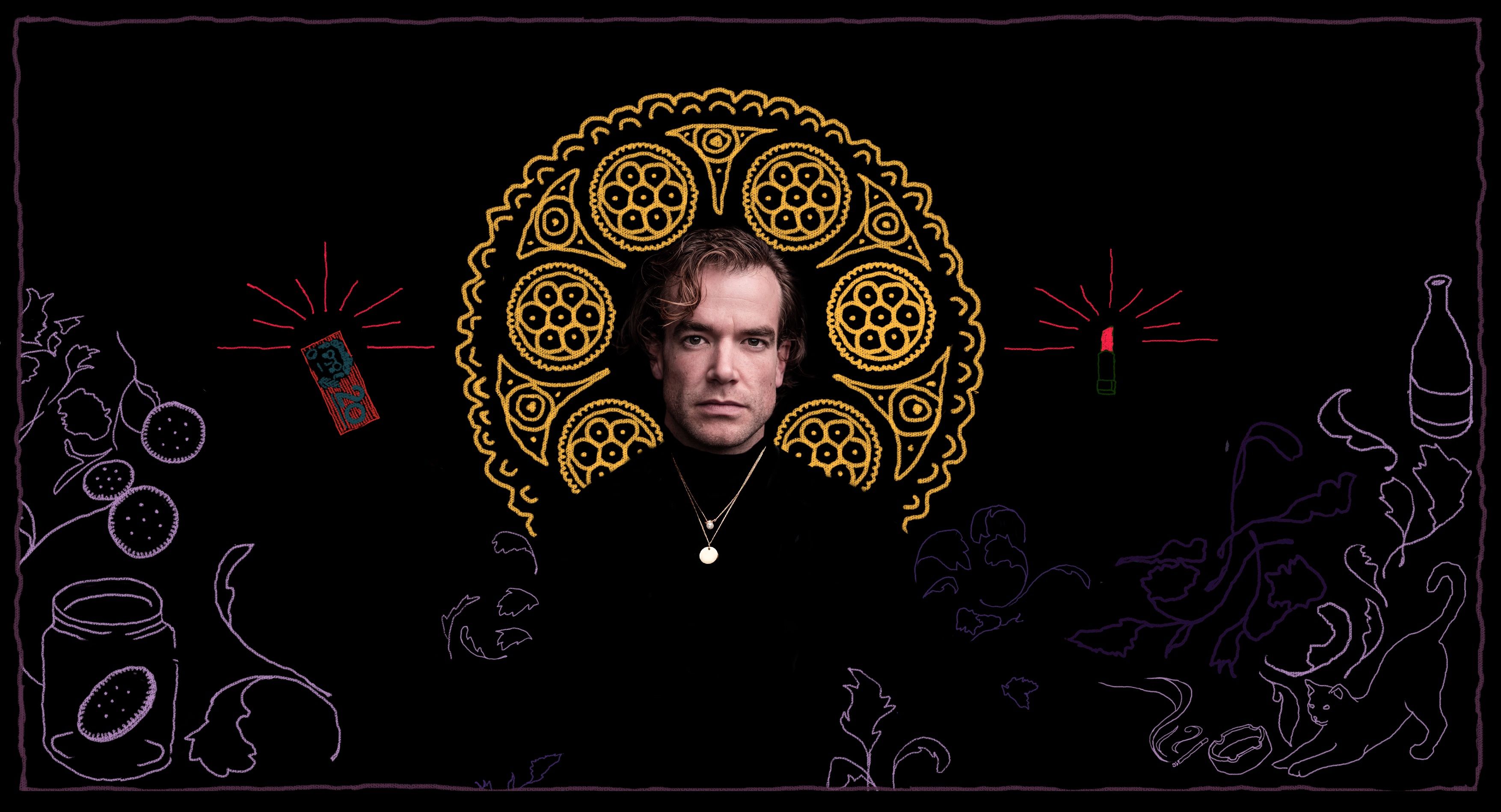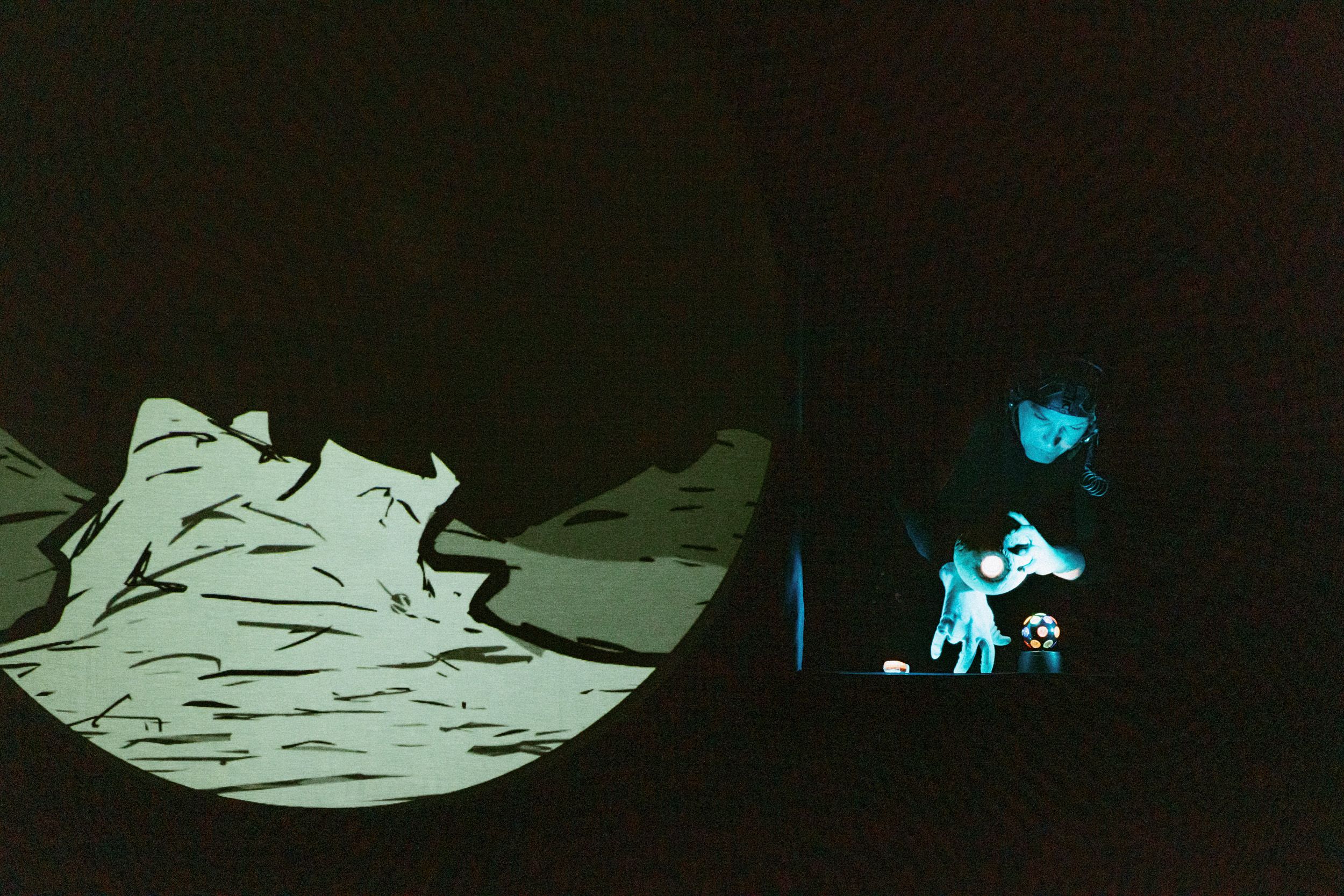Cash vs Culture - Why Arts Matter In Wānaka
This year's Wānaka Festival of Colour proved the importance of reconnection for the Upper Clutha region - but there’s still a battle ahead for arts to stake its claim.

On a near freezing late March evening in Central Otago, 60-odd souls fronted up to the century-old Bannockburn Coronation Hall for a night of old-style dancing and camaraderie.
Led by internationally-acclaimed choreographer Michael Parmenter and Balfolk Dunedin director Kate Grace, beaming locals skipped, looped, stumbled, whirled, and gavotted their way through a sequence of country dances drawn from the mid-nineteenth century and a multitude of cultural traditions.
The Bannockburn Ball was a local version of Balfolk, a popular European dance movement that Parmenter encountered while doing doctoral studies in Paris. The movement’s intention is to revive traditional folk dances of Europe in a way that allows anyone to participate. Conviviality and intimate connection are at the core of this contemporary reanimation of the kinds of traditional dances and gatherings that used to play a key role in knitting local communities together.
As such, this satellite event was an excellent introduction to the 2023 Wānaka Festival of Colour and its theme of reconnecting communities.
As with the Crystal Palace Dancehall event in Wānaka the following night, the joy of communality and physical intimacy following their prolonged suspension throughout the pandemic was a timely celebration of the value of the arts in bringing folk together and instilling a sense of belonging in a meaningful way.
Not just a pretty place
The Upper Clutha region (Wānaka and surrounds) is better known for the outstanding beauty of its scenery rather than the strength of its arts scene.
The area is woven together through an economy hungry for tourist dollars alongside agricultural and horticultural/viticultural operations.

Besides attracting adventurous sorts keen on hurtling down mountains, the hotspots of Wānaka and Tāhuna | Queenstown are a lure for extremely wealthy second (or third, or fourth) home owners who – I hazard a guess – are likely oblivious to the plight of those ubiquitous workers in the service of the hospo industry who suffer from a chronic shortage of housing. Sometimes the workers who come here are not transient by choice – they are obliged to move on because there is nowhere to live beyond overstuffed and overpriced hostels.
Yet between the über-wealthy and couch-surfing workers, there is a rapidly growing population of people migrating to the region for work and pleasure who - alongside long-term locals - have become increasingly vocal in support of better opportunities for experiencing high-quality art events.
There is also a significant number of artists and writers living in the region, which also boasts thriving music and theatre scenes as well as fantastic arts departments at local high schools in Wānaka and Queenstown, catering to a rapidly growing youth population.
But despite the welcome presence of highly motivated supporters of the arts, it can be a struggle to carve out coordinated infrastructure for the arts here.
A typically parochial battle line is being drawn in Wānaka at the moment. The two sides; the need for new state-of-the-art boat ramps to accommodate the growing number of big-ass boats and their peacock owners vs a new 1000-seater auditorium, offering much greater audience capacity than existing local venues.
You might recognise what side of the argument I sit but - hey - as the Festival’s whakataukī recognises, it takes all kinds of people: E koekoe e tūī, e ketekete te kākā, a kūkū te kererū (The tūī squawks, the kākā chatters, the kereru coos).
Suffice to say, arts funding falls behind sport by some margin in local district council budgets. With the clear benefits that Wānaka Festival of the Arts and other local arts initiatives have to offer, this can be an infuriating reality.
Colour counts

The demand for better arts’ infrastructure in the region predates - by many years - the inaugural Festival of Colour in 2004. Now in its 10th edition and this year rebranded as the Wānaka Festival of Colour to underscore its regional identity, the 2023 festival programme, brought together by Artistic Director Sophie Kelly, was exceptional in terms of its variety and the scope of its ambitions, all beautifully honed to the selection of small-scale venues in Wānaka and neighbouring areas.
“Boutique” might be the word the marketers use.
The two central venues – the Lake Wānaka Centre/Te Whare Tapere o Wānaka and the Pacific Crystal Palace Spiegeltent, which is a travelling venue owned by a consortium of festivals – both seat around 330 people.
Satellite venues included classic small-town community halls – Hāwea Flat Hall, Bannockburn Coronation Hall and a newly rebuilt Luggate Memorial Centre/Whare Mahana, the first community facility within New Zealand to be built to Passive House standards, as well as The Beehive events geo dome at The Camp in Hāwea.
These small venues - some seating only 50 - provided intimate settings to experience some world class acts as well as evoking the fabric of a regional community spirit, past and present.
The diverse array of music, dance, comedy, theatre, panel discussions (“Aspiring Conversations”), and community events featuring local, national and international acts was a tribute to the organisers as well as the enthusiastic team of some 120 volunteers and a vast array of local patrons and sponsors.
Depending on your persuasion, highlights included the première of the Royal New Zealand Ballet’s Woman of Words, a biographical dance work celebrating the life of Katherine Mansfield, co-commissioned by Wānaka Festival of Colour; The Savage Coloniser Show by Tusiata Avia, commissioned by the 2023 Auckland Arts Festival and on its second showing in Wānaka; the solo theatre piece Maureen – Harbinger of Death, written and performed by Australian award-winning actor and DJ Johnny Hawkins, telling the story of a self-described “working class glamour queen” living in Sydney’s Kings Cross in its heyday; and Otto and Astrid Play the Greatest Rock ‘n’ Roll Concert You’ve Never Seen! – an art rock duo from the German cult band Die Roten Punkte. Their brand of dysfunctional humour and great songs brought the house down with a sell-out show at the Pacific Crystal Palace.
Of those I was lucky enough to attend, a number of events stood out - including the country/folk balladry of Jenny Mitchell, originally from Gore, beautifully accompanied by her twin sisters with a special guest appearance by their dad; and the ingenious mix of puppetry, sound, live action and animation expertly deployed by The Last Great Hunt theatre practitioners from Perth in their small-scale theatre pieces The Adventures of Alvin Sputnik: Deep Sea Explorer and The New Owner.

On the surface, these works seem like cutesy flummery, but it is the exceptional artistry with which these dystopian tales of adversity and survival are imbued as well as the skill of the performers’ mimicry and manipulation of the simple display apparatus that elevates these performances.
Another highlight was the talk - as part of the Festival’s Aspiring Conversations series - by Michael J. Stevens and Helen Brown from the Ngāi Tahu Archive (pictured below), who spoke with great wit and wisdom on the impact of leading figures with whakapapa connections to the Wānaka and Hāwea region. Te Waipounamu is privileged to have the expertise of the custodians to shed light on Waitaha, Ngāti Mamoe and Ngāi Tahu histories, and this insightful talk was hugely appreciated by a sell-out audience in Wānaka.

There is no doubt that the region is hugely inspirational to artists - and events such as the Wānaka Festival of Colour offer a beacon for a cultural landscape beyond mountain biking and skiing.
As part of Otago’s economic diversification measures, Wānaka will also soon benefit from a $280 million film studio development, Silverlight Studios, which has received planning consent as well as support from the Government to the tune of $4.5 million.
However, most of the efforts to develop the arts in the Queenstown Lakes District are very much grass-roots affairs - with arts organisations running on shoe-string budgets and barely able to live up to the scope of their ambitions.
Greater investment from local councils and national funding organisations will be crucial to the future health of the region’s creative industries. Let’s hope the Wānaka Festival of Colour - for a start - will continue to thrive and the Government recognises the importance of the arts in Aotearoa beyond metropolitan centres.